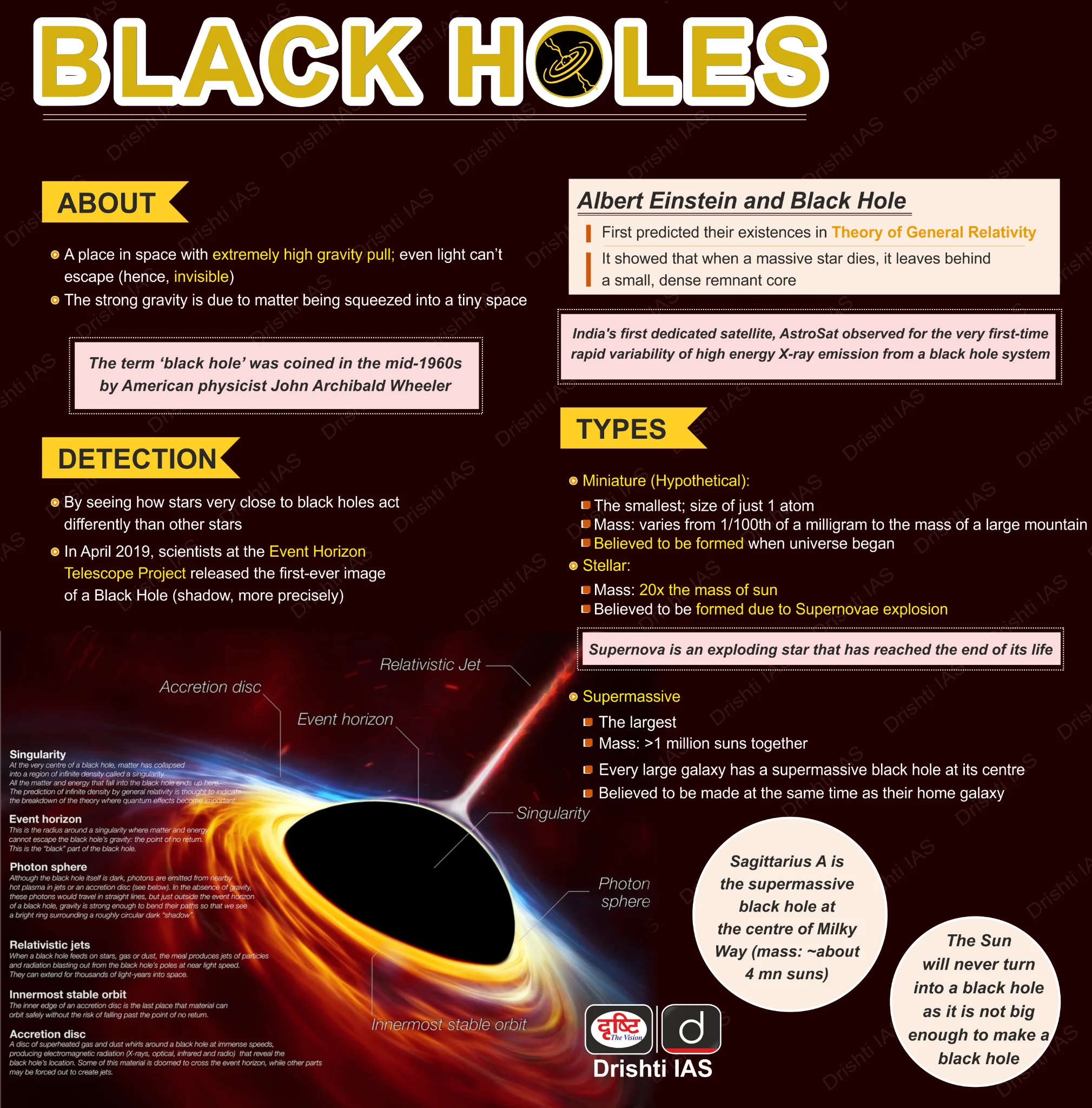Black Hole Merger | 18 Jul 2025
Why in News?
An international team of scientists has detected the most massive black hole merger ever observed. The event, named GW231123, was observed by the LIGO-Virgo-KAGRA (LVK) collaboration, which forms the Gravitational Wave Network.
What is a Black Hole Merger?
- About: A black hole merger occurs when two black holes orbit each other and gradually move closer by emitting gravitational waves (ripples in space-time caused by some of the most violent and energetic processes in the universe).
- As they spiral inward, they eventually collide and merge into a single, larger black hole.
- These gravitational waves are detected on Earth by observatories like the LVK network of gravitational wave observatories.
- Significance of GW231123: It involved two black holes, approximately 100 and 140 times the mass of the Sun, colliding to form a single, massive black hole about 225 times the Sun's mass.
- The waves from GW231123 actually originated billions of years ago, but only reached Earth in 2025.
- This black hole merger, unlike typical stellar black holes under 60 solar masses, GW231123 is much bigger and spinning unusually fast, making the discovery even more intriguing.
- Implications: Black holes this big are typically thought to come from the collapse of huge stars. This event suggests that some may instead form through mergers of smaller black holes.
Gravitational Wave Network
- The gravitational wave network, often referred to as the LVK collaboration, is a global alliance of observatories that work together to detect gravitational waves.
- LVK:
- LIGO (Laser Interferometer Gravitational-Wave Observatory): The first to detect gravitational waves in 2015, LIGO has two detectors located in the US.
- That historic gravitational wave detection confirmed a prediction made by Einstein (predicted their existence in his general theory of Relativity in 1916) and earned the 2017 Nobel Prize in Physics.
- Virgo: Located in Italy, Virgo joined the network to increase detection accuracy and help pinpoint the location of events.
- KAGRA (Kamioka Gravitational Wave Detector): A newer detector in Japan, KAGRA adds sensitivity and a broader geographic spread.
- LIGO (Laser Interferometer Gravitational-Wave Observatory): The first to detect gravitational waves in 2015, LIGO has two detectors located in the US.
Note: India in collaboration with the US is building the third detector of LIGO, which will be known as LIGO-India.
UPSC Civil Services Examination, Previous Year Question (PYQ)
Prelims
Q. Recently, scientists observed the merger of giant ‘blackholes’ billions of light-years away from the Earth. What is the significance of this observation? (2019)
(a) ‘Higgs boson particles’ were detected.
(b) ‘Gravitational waves’ were detected.
(c) Possibility of intergalactic space travel through ‘wormhole’ was confirmed.
(d) It enabled the scientists to understand ‘singularity’
Ans: (b)
Q. What is the purpose of ‘evolved Laser Interferometer Space Antenna (eLISA)’ project? (2017)
(a) To detect neutrinos
(b) To detect gravitational waves
(c) To detect the effectiveness of missile defence system
(d) To study the effect of solar flares on our communication systems
Ans: (b)

